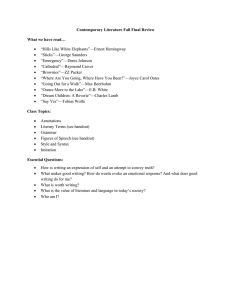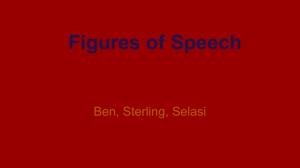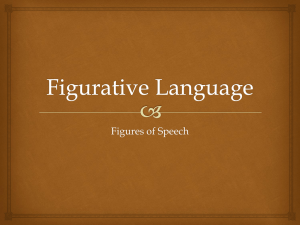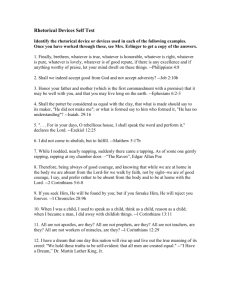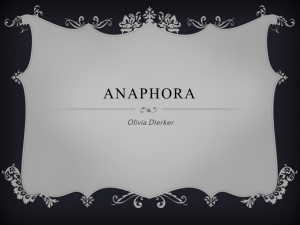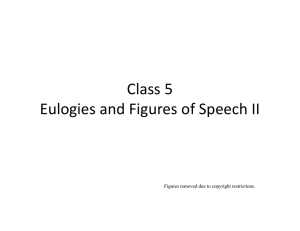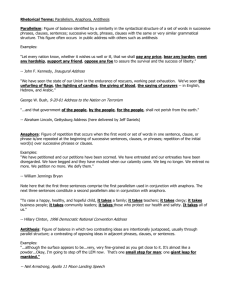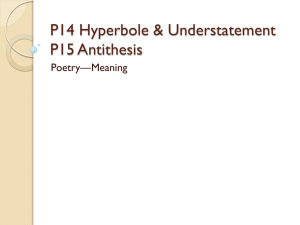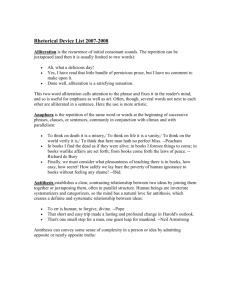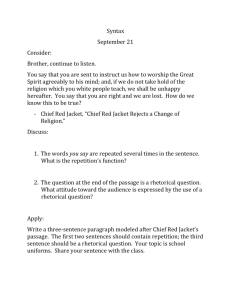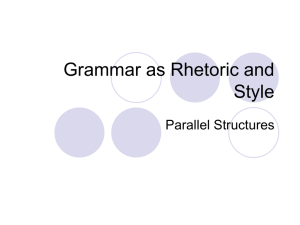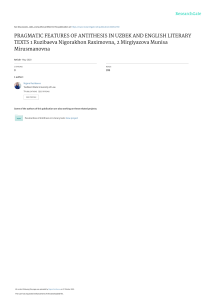Rhetorical Tropes and Schemes for The Perils of Indifference
advertisement
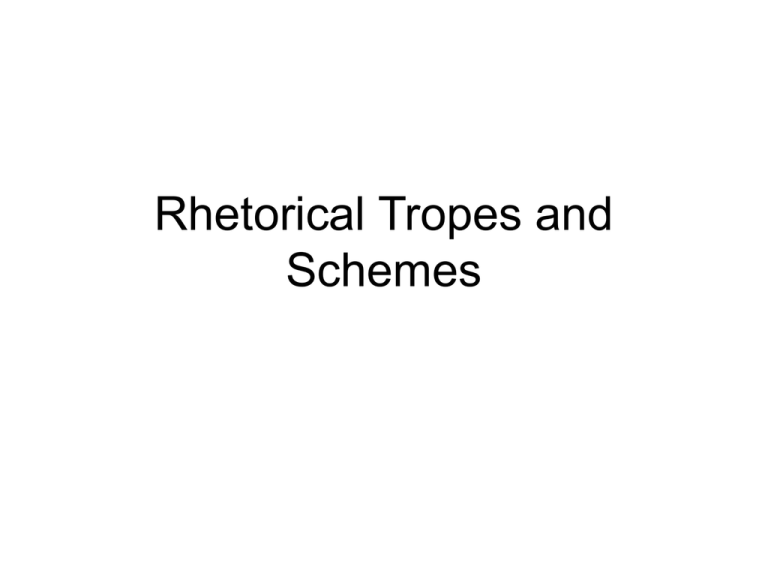
Rhetorical Tropes and Schemes Parallelism (Parallel Structure) • Parallel Structure is repetition of the same pattern of words or phrases within a sentence or passage to show that two or more ideas have the same level of importance. • Do not mix forms: When using parallel structure, make sure that you retain the same grammatical structure (clauses, phrases, infinitives, participles, gerunds, adjectives, etc.) – Example 1 – Not Parallel: Mary likes hiking, swimming, and to ride a bicycle. – Parallel: Mary likes hiking, swimming, and riding a bicycle. Parallel Structure for Rhythmic (poetic) Effect • “Beautiful and lovely it was, thus to walk through the world, thus childlike, thus awoken, thus open to what is near, thus without distrust. Differently the sun burn the head, differently the shade of the forest cooled him down, differently the stream and the cistern . . .” – Parallel Structure based on adverbs and anaphora. Hypophora • Hypophora is a figure of speech in which a writer raises a question and then immediately provides an answer to that question. – The basic difference between hypophora and a rhetorical question is that in a rhetorical question the answer is not provided by the writer since it does not require an answer. • Example:“What made me take this trip to Africa? There is no quick explanation. Things got worse and worse and worse and pretty soon they were too complicated.” – (Henderson the Rain King by Saul Bellow) Asyndeton (uh-sin-di-ton) • When conjunctions (but, for, so, or, and) are done away with after every successive clause or phrase for effect, then it’s called asyndeton. – For example: • I came; I saw; I conquered. (also tricolon and parallelism) • We met, we got engaged, we married. • She is addicted to chocolates, cakes, cookies. • I could have gone to war, I didn’t. Antithesis • Antithesis is contrary (opposite) ideas expressed in a balanced sentence. It is the juxtaposition of two words, phrases, clauses, or sentences contrasted or opposed in meaning in such a way as to give emphasis to their contrasting ideas and give the effect of balance. – Heaven is the antithesis of hell, thus if you say (or John Dryden does) “too black for heaven, and yet too white for hell,” then you’re using an antithesis. – Antithesis in The Tale of Two Cities by Charles Dickens – Chapter I • “It was the best of times, it was the worst of times, it was the age of wisdom, it was the age of foolishness, it was the epoch of belief, it was the epoch of incredulity, it was the season of Light, it was the season of Darkness, it was the spring of hope, it was the winter of despair, we had everything before us, we had nothing before us, we were all going direct to Heaven, we were all going direct the other way…” Anaphora • When the same word is used at the beginning of each clause, sentence or line; that’s anaphora. It’s a cousin of anadiplosis. – “It was the best of times, it was the worst of times, it was the age of wisdom, it was the age of foolishness, it was the epoch of belief, it was the epoch of incredulity, it was the season of Light, it was the season of Darkness, it was the spring of hope, it was the winter of despair…” • The clauses here use both anaphora and antithesis Anadiplosis (an-uh-di-ploh-sis) • Repeating the same word(s) at the end of a sentence or a clause and in the beginning of the following sentence or clause is known as anadiplosis. – For example: • “The general who became a slave; the slave who became a gladiator; the gladiator who defied an Emperor.” • “The mountains look on Marathon---And Marathon looks on the sea…” – It’s a good way to give rhythm to your writing
